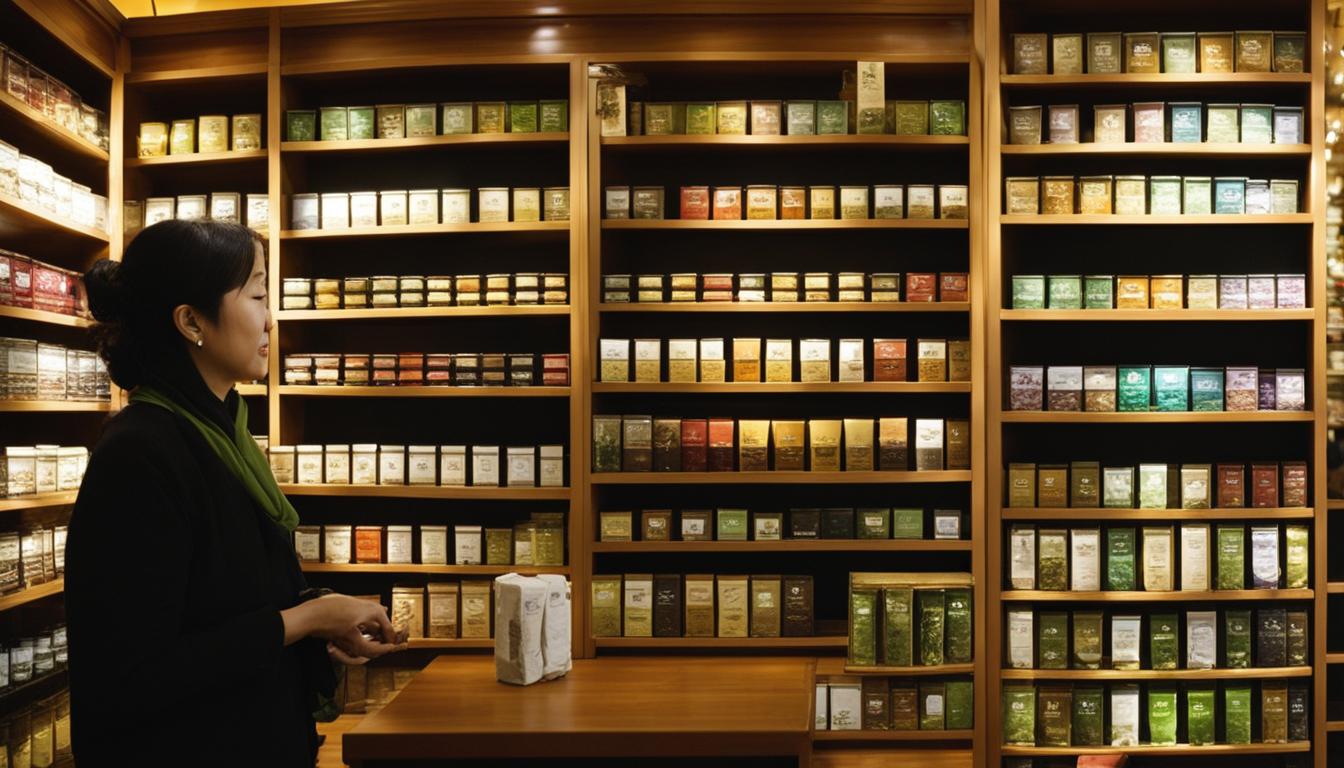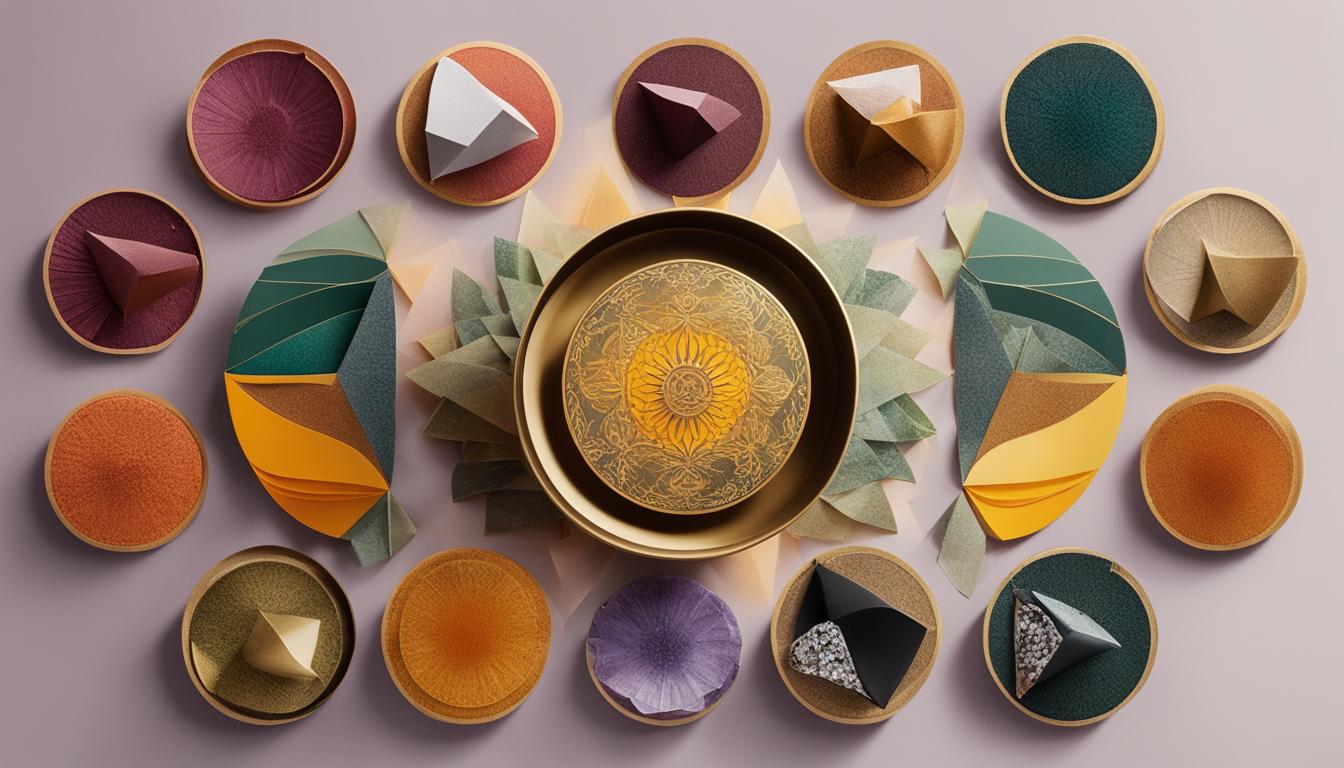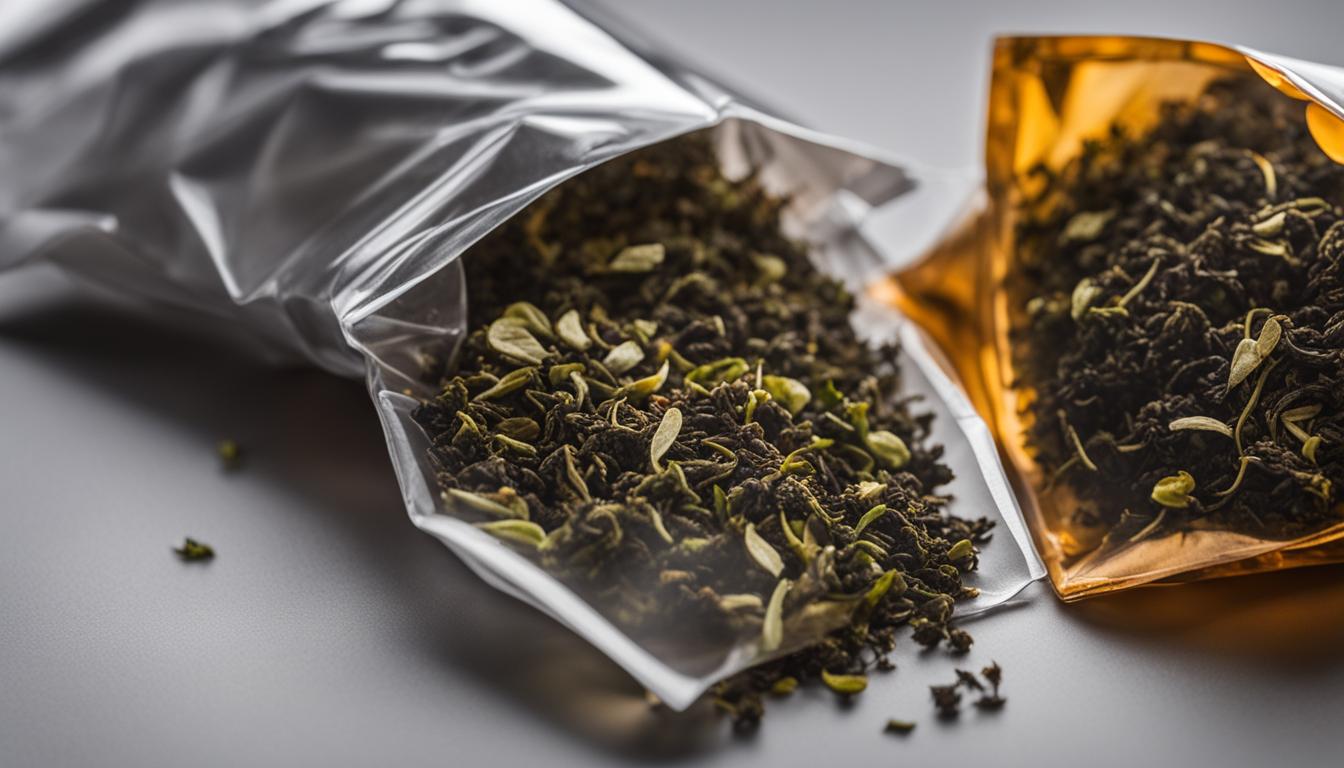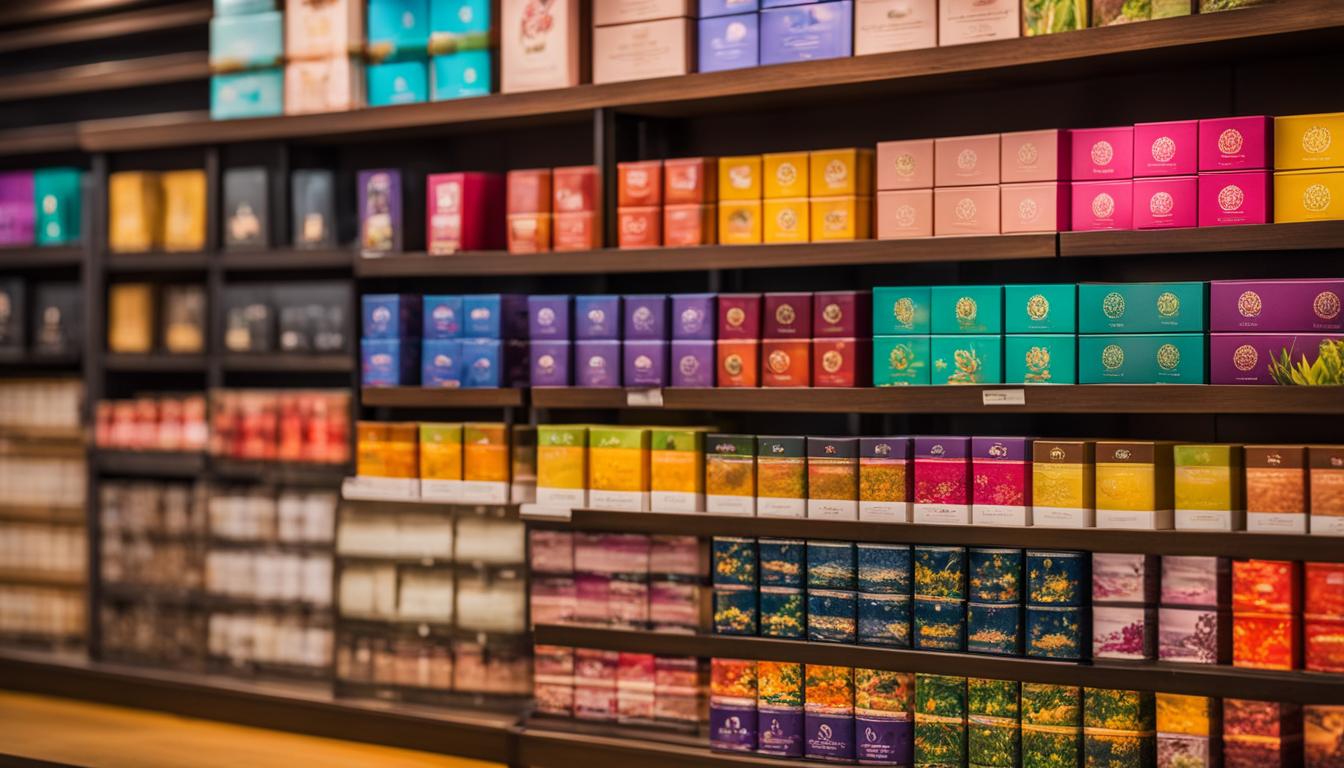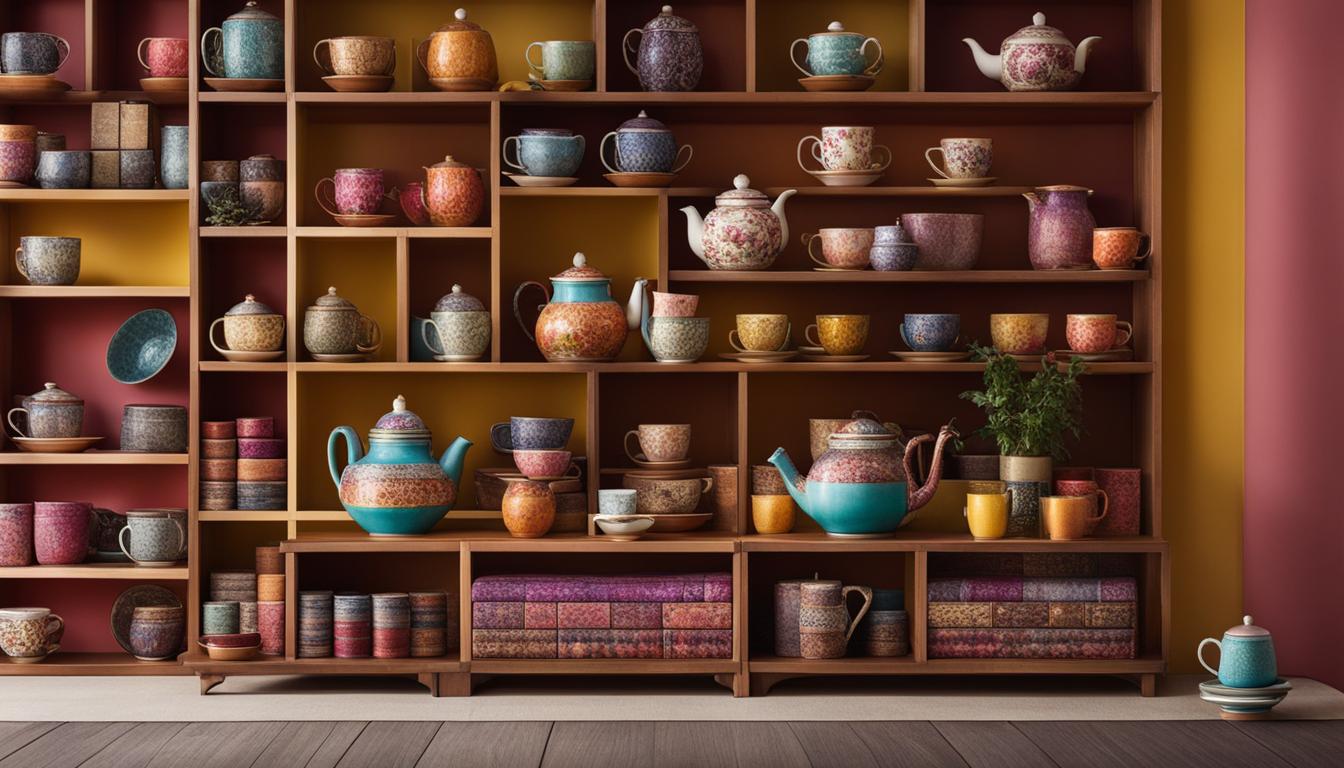Welcome to our exploration of consumer behavior in the exciting world of tea subscription and retail. In this article, we will dive deep into the trends, preferences, decision-making processes, and attitudes that shape the tea market. So grab a cup of your favorite brew and let’s embark on this flavorful journey together!
Key Takeaways:
- Consumer behavior in the tea retail market is influenced by factors such as health consciousness, convenience, sustainability, and flavor preferences.
- Black tea is the most popular type of tea in the US, consumed daily by a large number of health-conscious individuals.
- Supermarkets and hypermarkets play a significant role in the growth of the tea market due to their wide availability and convenience.
- In the UK, hot tea, especially black tea, dominates the market, with price and taste being key factors in purchasing decisions.
- Consumers in the UK are increasingly interested in teas that offer weight loss, detox, and immunity-boosting properties.
Stay tuned as we delve deeper into these fascinating insights and uncover even more about consumer behavior in the world of tea subscription and retail.
Key Trends in Tea Consumption
As the tea market continues to grow and evolve, several key trends have emerged in tea consumption. These trends reflect shifting consumer preferences and behaviors, highlighting the changing landscape of the tea industry.
Growing Trend of Herbal Teas
One notable trend is the growing popularity of herbal teas. Consumers are increasingly drawn to herbal teas due to their perceived health benefits and natural ingredients. Herbal teas, such as chamomile, peppermint, and hibiscus, offer a variety of flavors and can be enjoyed both hot and cold. The global herbal tea market is projected to reach $3.9 billion by 2023, indicating the significant impact of this trend on the tea industry.
Surging Interest in Functional Teas
Functional teas, which are specifically formulated to provide health benefits, have also gained considerable attention from health-conscious consumers. Ingredients like turmeric, ginger, and green tea are known for their antioxidant properties and potential health benefits. As a result, functional teas like turmeric tea and green tea have seen increased demand in recent years. This trend reflects consumers’ desire to incorporate wellness-focused beverages into their daily routines.
Booming Market for Matcha Tea
Another trend in tea consumption is the booming market for matcha tea. Matcha tea, made from finely ground green tea leaves, has gained popularity for its unique flavor profile and potential health benefits. It is rich in antioxidants and is known for providing a calm energy boost. The global matcha tea market is expected to reach $3.8 billion by 2028, indicating the continued growth and interest in this vibrant green tea.
Increasing Demand for Loose-Leaf Tea
While tea bags have traditionally been the most common form of tea consumption, there has been a resurgence in the popularity of loose-leaf tea. Consumers are recognizing the higher quality and distinct flavor profiles that loose-leaf tea offers. Additionally, loose-leaf tea allows for greater customization and experimentation, as it can be blended with different herbs, spices, and fruits. This trend highlights consumers’ desire for a more personalized and elevated tea-drinking experience.
Growing Commitment to Sustainability
Sustainability has become a focal point in the tea industry, as consumers increasingly prioritize eco-friendly and socially responsible products. Tea companies are responding to this demand by utilizing recycled packaging, sourcing from sustainable farms, and reducing water usage in tea production. This commitment to sustainability aligns with consumers’ values and positions tea brands as responsible and environmentally conscious. By adopting sustainable practices, the tea industry is not only meeting consumer expectations but also contributing to a more sustainable future.
| Trend | Market Impact |
|---|---|
| Growing Trend of Herbal Teas | $3.9 billion herbal tea market projected by 2023 |
| Surging Interest in Functional Teas | Increased demand for turmeric tea and green tea |
| Booming Market for Matcha Tea | $3.8 billion global matcha tea market expected by 2028 |
| Increasing Demand for Loose-Leaf Tea | Resurgence in popularity for higher quality loose-leaf tea |
| Growing Commitment to Sustainability | Tea industry adopting sustainable practices |
These key trends in tea consumption highlight the evolving preferences and behaviors of tea consumers. As we continue to seek unique flavors, health benefits, and sustainable choices, the tea industry will undoubtedly respond with innovative products and practices to meet our changing needs.
Conclusion
As we wrap up our exploration of consumer behavior in the tea retail industry, it’s clear that the market is experiencing impressive growth. With a projected CAGR of 3.5% from 2022 to 2030, the tea industry is thriving, fueled by factors like increasing health consciousness among consumers and the rising popularity of specialty teas.
One striking trend we’ve observed is the shift in consumer preferences towards herbal and functional teas. Health benefits are a major driving force, with individuals seeking teas like matcha, known for its unique flavor and remarkable health properties. The global market for matcha tea is expected to reach a staggering $3.8 billion by 2028.
Furthermore, there’s a resurgence in the demand for loose-leaf tea. Consumers are recognizing the superior quality and distinct taste of loose-leaf varieties, appreciating the opportunity to create their own personalized blends. This trend reflects the growing desire for unique and customizable tea experiences.
Lastly, sustainability has emerged as a crucial focus for both consumers and brands in the tea industry. As more people become environmentally conscious, they are gravitating towards tea companies that prioritize sustainable practices, such as using recycled packaging, sourcing from eco-friendly farms, and reducing water usage. Embracing sustainability is not only good for the planet but also critical for meeting consumer demands and maintaining a competitive edge.
FAQ
What type of tea is most popular in the US?
Black tea is the most popular type of tea in the US, enjoyed by a large number of people on a daily basis. It is preferred by health-conscious consumers due to its antioxidant content and numerous health benefits.
Which distribution channels contribute the most to the growth of the US tea market?
Supermarkets and hypermarkets are expected to be the largest contributors to the growth of the US tea market. This is due to their wide availability and the preference of consumers for convenience when purchasing tea.
What factors influence purchasing decisions for tea consumers in the UK?
In the UK, price and taste are important factors that influence purchasing decisions for tea consumers. Hot tea, particularly black tea, accounts for nearly 80% of total tea consumption in the country.
What are some of the health-related properties that UK consumers look for in teas?
Consumers in the UK are increasingly interested in the health benefits offered by teas and are willing to pay more for varieties that promote weight loss, detoxification, and immunity-boosting properties.
Which region has the largest tea market globally?
The Asia-Pacific region has the largest tea market globally, with China serving as the largest producer and consumer. Premium and specialty teas are gaining popularity in this region due to increasing health consciousness and a desire for unique experiences.
What are some factors driving the growth of the tea market in Africa?
The tea market in Africa is growing steadily, driven by increasing popularity among young consumers, the growing middle class, and the rising demand from health-conscious individuals.
What are the different types of tea available?
There are various types of tea, including black, green, oolong, white, herbal, rooibos, and yerba mate. Each type has its own unique characteristics and flavors.
Why are herbal teas gaining popularity?
Herbal teas are gaining popularity due to their perceived health benefits. The global herbal tea market is projected to reach $3.9 billion by 2023 as more individuals seek out natural remedies and wellness-promoting beverages.
What are some functional teas that are in high demand?
Functional teas, such as turmeric tea and green tea, are experiencing increased demand from health-conscious consumers. These teas are known for their specific health benefits and are sought after for their positive effects on well-being.
Why has matcha tea become popular?
Matcha tea, made from ground-up tea leaves, has gained popularity due to its unique flavor and health benefits. The global matcha tea market is expected to reach $3.8 billion by 2028 as more individuals recognize its appeal.
Why is loose-leaf tea regaining popularity?
Loose-leaf tea is regaining popularity as consumers recognize its higher quality, distinct taste, and the ability to create personalized blends. It offers a more customizable tea-drinking experience compared to pre-packaged tea bags.
How is sustainability being addressed in the tea industry?
Sustainability is becoming a focus in the tea industry, with tea companies using recycled packaging, sourcing from sustainable farms, and implementing measures to reduce water usage. This response aligns with consumer demands for environmentally friendly products.
What are some key factors driving the tea market’s growth?
The tea market is experiencing significant growth, driven by evolving consumer behavior and preferences. Factors such as health consciousness, convenience, sustainability, and flavor preferences all contribute to this growth.
What should tea brands focus on to succeed in the market?
To succeed in the tea market, brands need to understand consumer behavior, offer products that align with current trends, and provide a positive customer experience. This includes staying updated on consumer preferences and continuously innovating to meet their needs.

